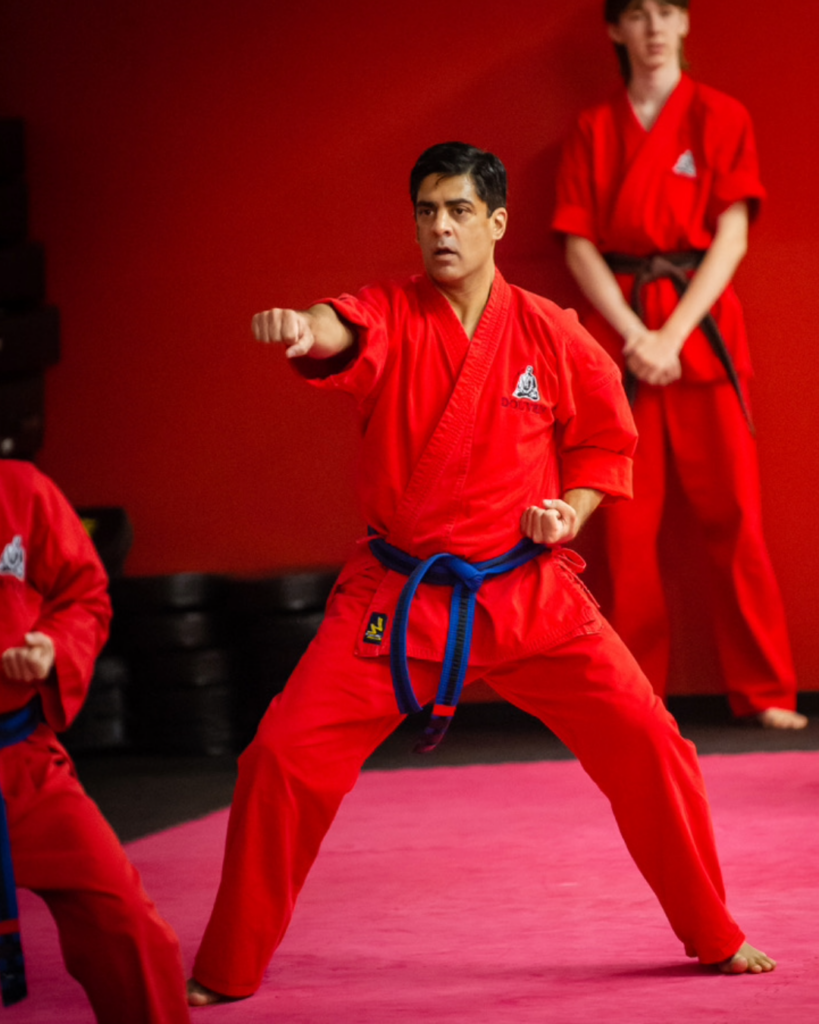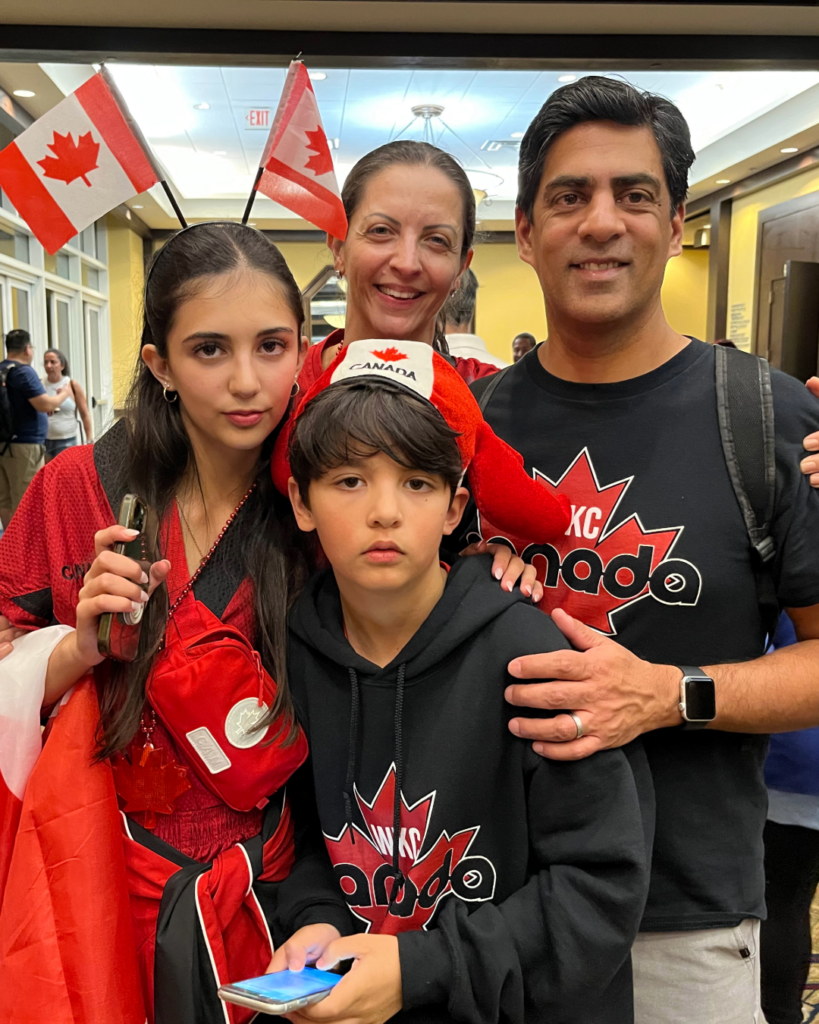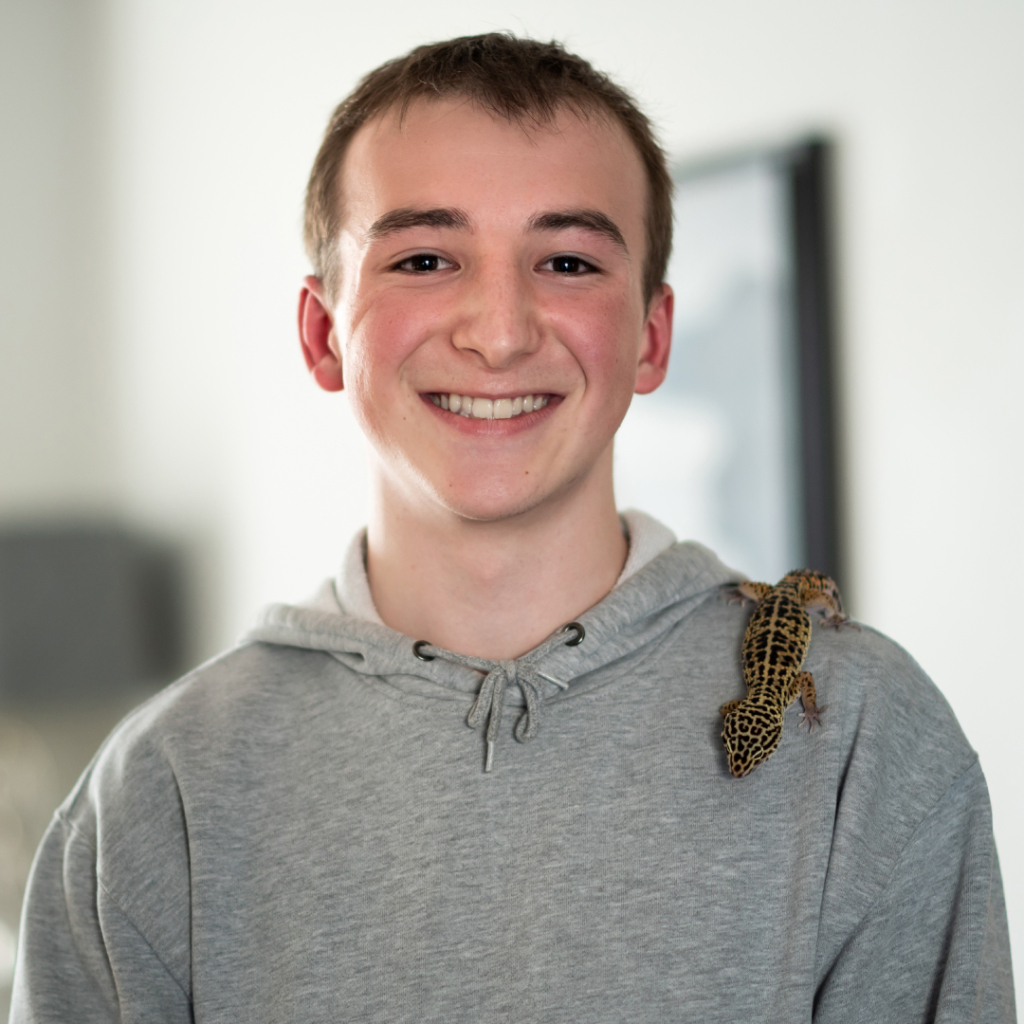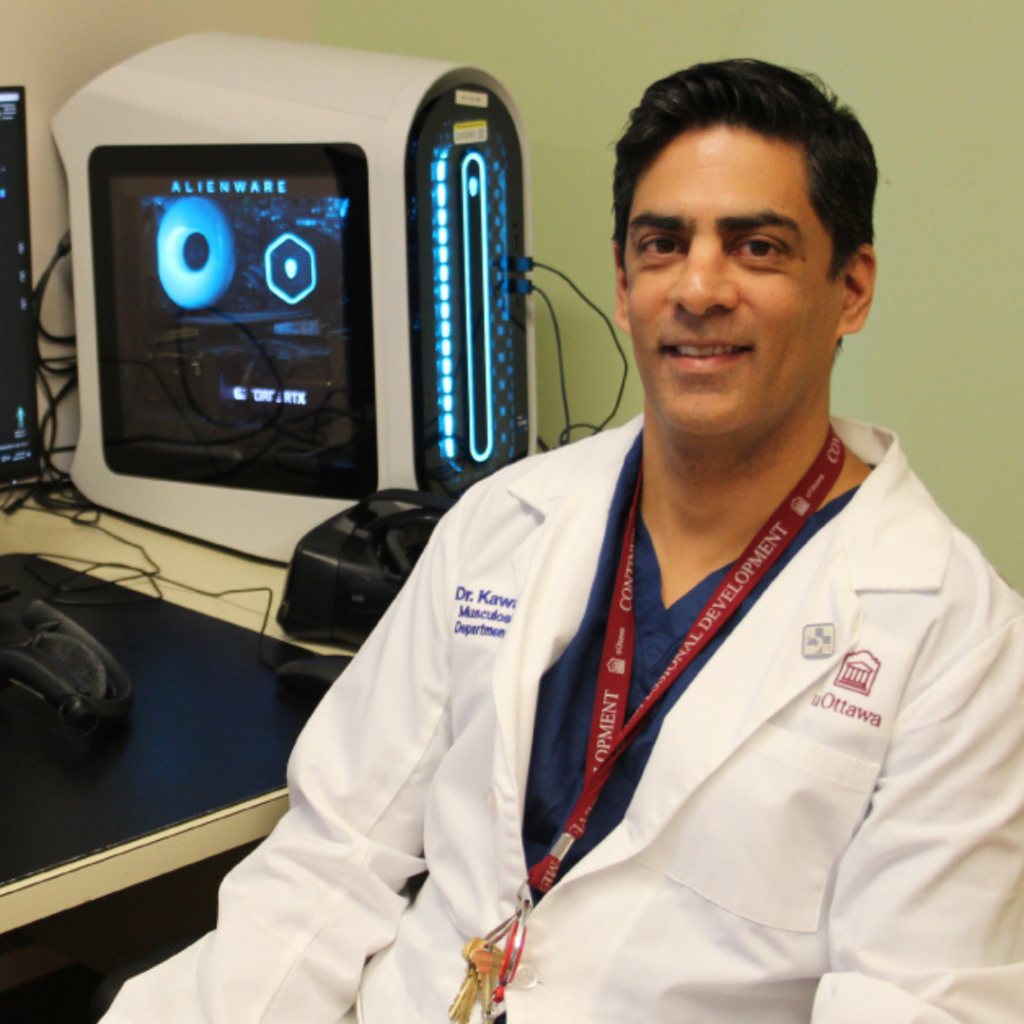
If you saw Dr. Kawan Rakhra at work, at a glance you might think he was slacking off and playing video games. But don’t be fooled, donning a classic gamer’s headset is part of the accomplished radiologist’s critical work.
Dr. Rakhra is also a clinical investigator at The Ottawa Hospital, and he specializes in musculoskeletal (or MSK) radiology. He spends his days searching for answers in the scans we do on patients, using the latest technology, and always looking forward to what’s next.
Find out more about what drew Dr. Rakhra to radiology, what he’s most excited about, and what he does in his spare time.
Q: Can you tell us a bit about where you’re from?
I was born and raised here in Ottawa, but I got a chance to do my training outside of Ottawa. I went to Queen’s University for my undergrad, then to Memorial University of Newfoundland in St. John’s for my medical training, and to University of Alberta for my residency training program. Finally, I went to the University of Toronto for my radiology fellowship. My training really let me go almost coast to coast.
Q: How did you decide to pursue medicine, and specifically radiology?
A: Growing up, I was always drawn to mathematics and the sciences. I did my undergraduate degree in life sciences, just a broad-based science program, and when I got exposed to courses in anatomy and physiology, I was drawn more to the health sciences. At that point, after my second year, I committed to pursuing a career in medicine.
What attracted me to radiology was that it was heavily technology dependent. I remember when I was a medical student, way back when, I could see computers and software technology evolving exponentially. I knew radiology would be transformed as well, and as such, that it would be very dynamic. It is exciting to see that the things I do today, we couldn’t even fathom doing 20 years ago. It’s like something out of a sci fi movie, and the role of radiologist has really transformed now and allowed us to make a bigger impact on patient care.
Q: How would you describe what you do?
A: Students ask me what I really do as a radiologist, and in the simplest terms, I tell them I basically play Where’s Waldo in black and white, all day long. It’s a game for me, and I really love it. You’re always looking for that disease or that finding hidden in the X-ray or MRI image. And maybe in the different parts of the body the disease is wearing different clothes or different hats, but it’s always there. It’s my job to find the “Waldo.”
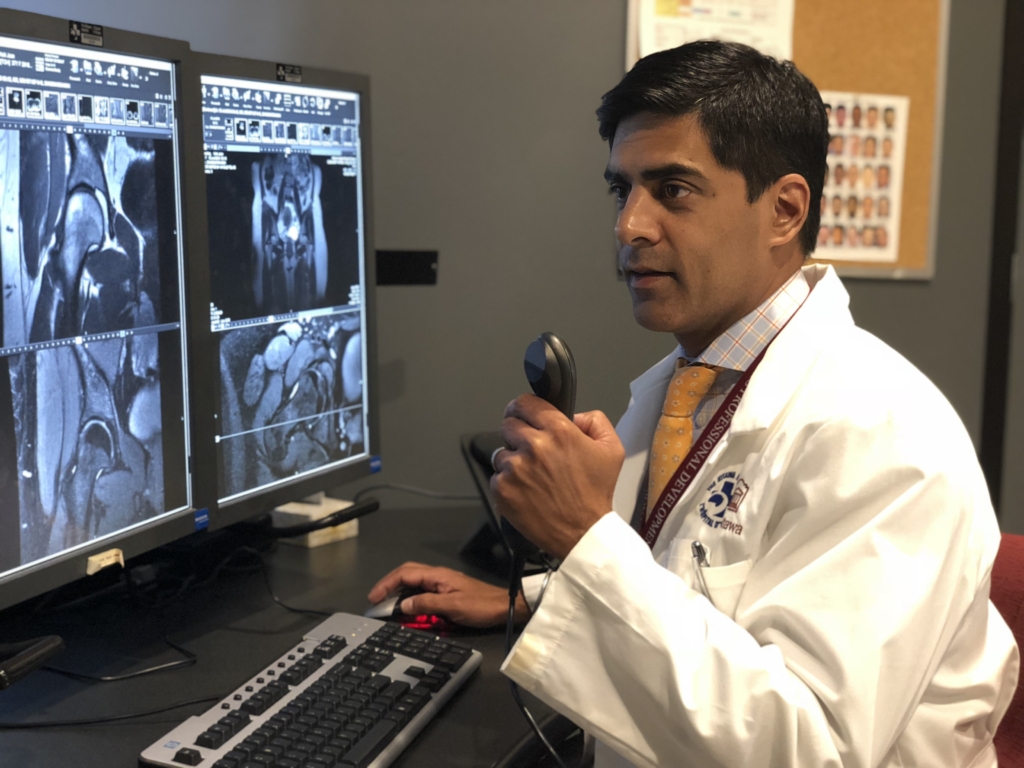
Q: Virtual reality (VR) is being used today in radiology — how does it affect your work?
A: I think VR will lead a paradigm shift in radiology. The traditional CT and MRI images that I used to use to make the diagnosis are now just the raw data the VR software uses — it integrates and converts thousands of flat, 2D images into a single holistic 3D model.
The really powerful use of VR software, though, is that I can put on a headset and view the 3D model in the virtual space; I’m not restricted to a flat screen anymore. You put the headset on, and all of a sudden, you are immersed inside the patient’s body and able to quickly view the cancer in ways you never could with a relatively restrictive, flat 2D monitor system.
I find viewing the model in a virtual space really helps me appreciate the depth, size, and the spatial relationships of the complex anatomy; I understand the cancer a lot better in relation to other critical structures.
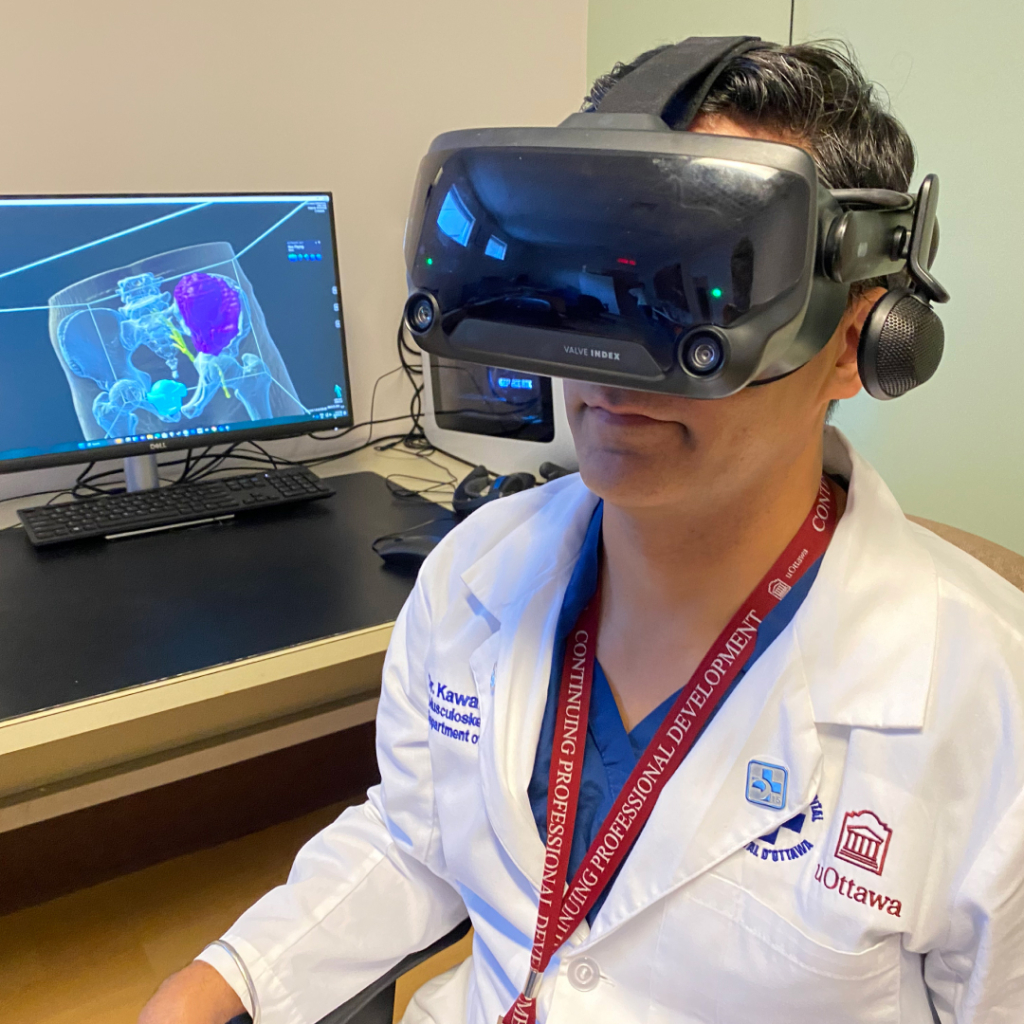
I’m able to understand the anatomy faster, with greater confidence, and my reports are more definitive and impactful.
I never in the past imagined I’d be doing my job in the virtual space of 3D models using a video-gaming headset.
Q: How does VR affect the patient experience, such as with our recent cancer patient Emeric Leblanc?
A: I felt a lot more connected to Emeric knowing that the model we created would be shown to him. I think engagement is really essential these days, especially in cancer treatment. We want, and many patients want, to understand the disease and surgical plan. And sometimes that’s best done if they can visualize their cancer. We couldn’t do that in the past; it wasn’t worthwhile trying to show hundreds of images to the patient, expecting them to understand the true nature and anatomy of the disease. But with a single 3D VR model, they’re able to understand a lot faster and a lot better. We need to communicate so much information to the patient about the tumour in a short period of time. As the saying goes, if a picture’s worth 1,000 words, well a 3D VR model is worth a million.
Read more about Emeric Leblanc and the VR surgery that removed his cancer.
Q: Why did you choose to work — and stay — at The Ottawa Hospital?
A: I’ve spent my entire career here, and I think the main thing that keeps me here is the people I work with and the ability to collaborate with physicians outside of radiology — in orthopedics, rheumatology, physiatry, and neurology. There’s a large number of musculoskeletal specialists that work here at The Ottawa Hospital, and being able to engage them in complex cases is very rewarding. I’m never bored.
It’s a great place to be. There’s so much opportunity in any specialty you want to work in. I find there’s a lot of energy and a lot of great, young minds.
Q: What excites you about the future?
A: When I think about what I was doing 20 years ago, I’m not doing it the same way now. And 20 years from now, there will probably be more exciting things, more new technology, more innovation. Radiology is always transforming; we tend to keep up with technology. One thing I’ve learned over the years is never have any boundaries. Never put any limits on what your specialty can do. Just keep moving forward and really tap into any innovation you see outside of your core specialty.
Q: Where would we find you when you’re not at work?
A: My wife and two kids keep me very busy. I do a lot of driving, as you can imagine, but in the little spare time I can gather myself, I recently took up martial arts. I’m on track to getting my black belt later this year, assuming no musculoskeletal injuries along the way. My daughter started, and I saw classes for adults and thought, “Maybe I can do that as well.” We’re going for our black belts together, so it’s a great father-daughter bonding experience.
